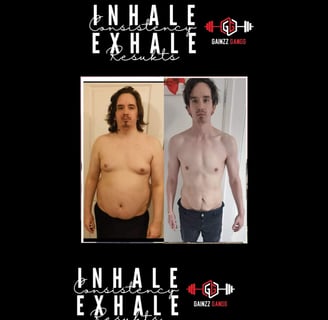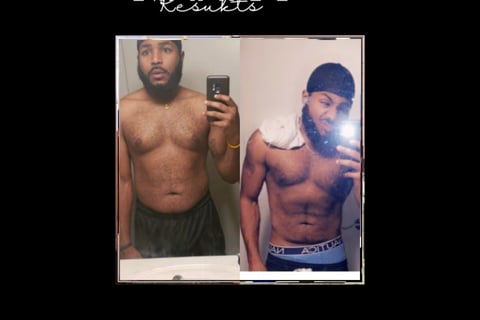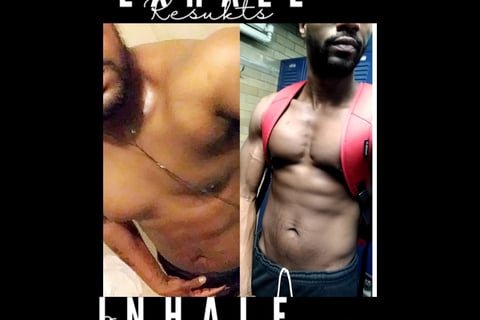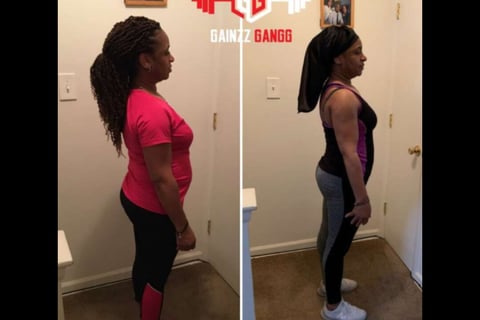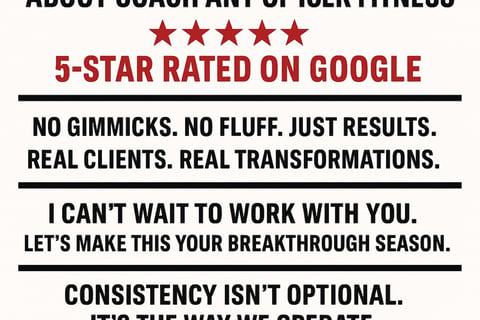Master Breathing Techniques for Kettlebell Swings
Discover expert breathing techniques for kettlebell swings with our guide from Trap Yard Boot Camp in Harrisburg, PA. Boost your performance, protect your back, and achieve stronger results in kettlebell training. Perfect for beginners and boot camp warriors alike!
Coach Ant
4/30/20253 min read


Why Breathing Matters More Than You Think
At Trap Yard Boot Camp, we don’t just swing weights—we swing with purpose, precision, and power. One of the most overlooked techniques in kettlebell training (and almost every damn boot camp workout) is your breath. Yeah, that thing you’re doing right now while reading this. Breathing right—especially during high-intensity movements like kettlebell swings—can make the difference between feeling like a savage or feeling smoked halfway through your set.
When you breathe the right way, you power your core, protect your lower back, and increase the explosiveness of every rep. You’ll swing harder, last longer, and look like you’ve done this before. But if your breath is off? Expect sloppy form, early fatigue, and a one-way ticket to "Why does my back hurt?" land.
Trap Yard ain’t just about working hard—it’s about working smart. So let’s break down exactly how to blow on those swings so you can get the most out of every single rep, every damn time.
The Right Way to Breathe on the Swing
We keep it simple, real, and raw at the Yard. Here’s how you blow out on a kettlebell swing:
Inhale sharply through your nose as the bell drops between your legs. This loads your hips and gets your core braced up. Think of it like loading a spring.
Explosively exhale through your mouth as you swing the kettlebell up. Make it short, strong, and controlled—like a quick “TSSS!” or “HUP!” That sound isn’t for show—it helps fire your abs and lock your form in.
Match your breath to your hips. Your hips drive the movement, not your arms. Every time your hips snap forward to push that bell up, that's when your sharp exhale hits.
Here’s a rhythm to keep in mind:
Breathe in – swing back. Breathe out – swing forward.
You’ll notice your breathing becomes a metronome—steady, sharp, and explosive. That’s the trap yard rhythm, baby. This keeps your swings powerful and your body protected.
Bonus tip: Don’t hold your breath. This ain’t a squat. We’re moving fast and repeatedly. You need oxygen cycling in and out. Holding your breath might work for one heavy deadlift—but for swings, it’s a recipe for burnout and dizziness.
Making It Stick in the Yard
At Trap Yard Boot Camp, you’ll hear that exhale across the yard like a battle cry. We train people to use their breath like a weapon. And trust—once you get the rhythm, your form tightens up, your energy goes further, and your results start skyrocketing.
Whether it’s your first day or your 100th, breathing correctly on kettlebell swings gives you:
More endurance – you stop wasting energy and start building it rep after rep
Stronger core activation – your abs do work, not your lower back
Better posture and alignment – you look and feel more solid in every swing
Cleaner form – the kettlebell moves through its arc smooth and effortlessly
This small habit becomes part of the Yard culture. It’s loud. It’s powerful. It’s efficient. It’s what separates the newbies from the savages.
And guess what? You don’t need to “master” kettlebells before you learn this. You start with the breath. Then the form follows. So when you step into the Trap Yard and grab that bell, remember—you ain’t just swinging metal. You’re building rhythm. You’re building strength. You’re blowing like a beast.
Join us at Trap Yard Boot Camp in Harrisburg, Pennsylvania—where outdoor fitness gets real, results come raw, and breathing becomes part of the grind. Your first 7 classes get you closer to a free 8th class and unlock exclusive access to our personalized workout app, coaching, and more. Now swing that bell like you mean it. And don’t forget to blow.
Achieve
Transform your body into a fat burning machine today!
Info@icerfit.com
717-593 - 7041
© 2024. All rights reserved. ICER Fitness
Results Through Consistency

